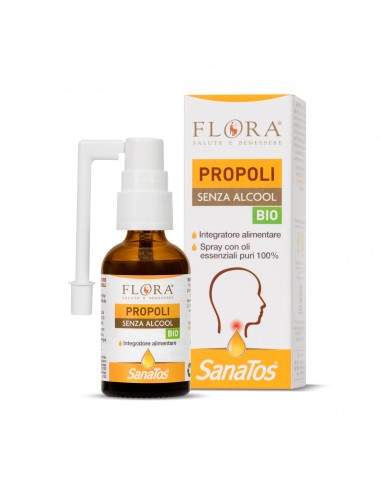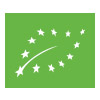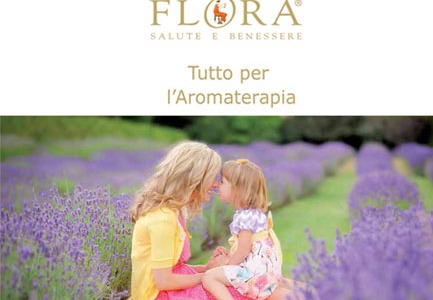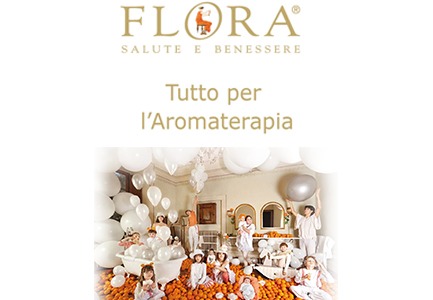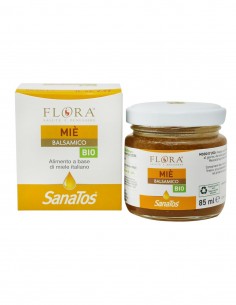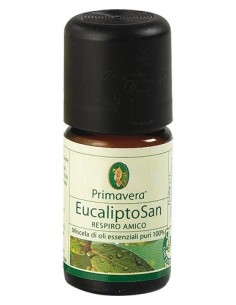Dietary supplement based on propolis and 100% pure, complete and natural essential oils. Propolis is a resinous mixture that bees collect from the buds and bark of trees and then process to make it suitable for protecting the hive, using it as an antiseptic substance. Enriched with 100% pure honey and essential oils, this organic Italian propolis is produced by bees naturally, without forced production techniques, and is characterized by a high content of heterogeneous natural substances, including flavonoids (particularly galangin), tannins and caffeic acid, which contribute to the physiological well-being of the throat. With known beneficial properties on our organism.
- Properties
- Beneficial for the throat
- Form
- 30 ml
- Does not contain
- Dyes, preservatives, synthetic substances
8019359021040
Glycerine*, propolis* (Propolis resin - glyceric extract), Demeter sage** (Salvia officinalis – leaves, hydrolate), honey* (Mel), Demeter lavender** (Lavandula officinalis – flowers, EO), Demeter peppermint** (Mentha x piperita - whole plant, EO), lemon* (Citrus limon – peel, EO), malic acid. Ingredients are sourced from controlled organic* and demeter biodynamic** farms.
Did you know…
Propolis extract: the name propolis derives from the Greek πρόπολις, composed of πρό (pro) in front of, and πόλις (polis) city, i.e. in front of the city; this word, figuratively speaking, takes on the meaning: defender of the city. The term was used by Aristotle and Pliny the Elder in ‘Naturalis Historia’ to refer to the resin processed by bees, who use it to defend their city (the hive) from dangers such as disease and predators. Propolis is one of the oldest used natural substances. As early as ancient Egypt, it was used for mummification (often referred to by the generic name of resin). In Ancient Greece (in the times of Aristotle, Galen of Pergamom and finally the Persian Avicenna), it was used externally as a healing agent for wounds or sores. The use of propolis is widely documented among numerous cultures around the world. The Incas used it to treat febrile illnesses, while in Russia it was a remedy for all problems of the oral cavity, used in cases of caries and inflammation. Propolis was one of the remedies of choice until the 18th Century, when it was used to treat respiratory inflammation, but also sores, insect bites, etc. It then fell into disuse, but has regained its value in the herbalism as a valid adjuvant to promote the functioning of the respiratory tract.
Honey: For many centuries it has been used as a highly nutritional food; in recent years, ancient ways of using it are being rediscovered. Very ancient documents in fact present honey as a powerful medicine. As early as 2000 BC there is evidence of honey being used as a medicine for external use. In the ‘Ebers Papyrus,’ dated 1550 BC, honey was used for many preparations, including those for eye health, for application to wounds and abscesses, and even following surgery (such as circumcision). Even the 'Surgical Papyrus', a papyrus of Egyptian medicine, mentions the use of honey as a wound dressing. In general, its use is found in all cultures where it is traditionally used for external use, but also for throat, respiratory and intestinal disorders.
Sage hydrolate: Sage is an aromatic herb whose use has been known since antiquity; indeed, there is evidence of its use in therapeutic practices by the Egyptians, Greeks and Romans. Its properties were numerous, so much so that its name derives from the Latin salvus, which means 'saved.' It was used as an anti-hemorrhagic, for washing and disinfecting ulcers and sores, and in cases of coughs and sore throats. This last function in particular has been handed down in traditional use: it is no coincidence that our grandmothers gargled with sage water, or sage decoctions (or chewed the leaves directly) in cases of mouth inflammation.
Lemon essential oil: Although the lemon is traditionally associated with the Mediterranean basin (when we think of lemons we immediately think of sunny Sicily), its origins actually date back many years to civilizations that settled in the area around the Indus river in the northwestern foothills of the Himalayas. It then travelled to China and then Europe, thanks to the Arabs, Greeks and Italians, who imported lemons initially for ornamental and culinary purposes, and later between the 11th and 13th Centuries, because of its anti-inflammatory and disinfectant properties it became being widely documented in scientific treatises for use in treating ailments.
Peppermint essential oil: Mint is one of the plants that have always played an important role, and to which numerous therapeutic and medicinal properties have been ascribed. The Egyptians and Greeks used it for its anti-nausea properties, and as a digestive aid. Pliny the Elder extolled its properties, saying that its fragrance was able to, "excite the soul and stimulate the appetite." The Salerno Medical School used it extensively as a vermifuge and even Pietro Andrea Mattioli, a herbalist from the 1500s wrote, "Mint has a certain bitterness in it, with which it kills worms". Its properties are so many and have always been appreciated that in the 11th Century Walahfried Strabo, a German abbot, theologian, and poet wrote: "If a man wanted to enumerate all the qualities, types and names of mint, he would also have to know how many fish swim in the Red Sea or how many thunderbolts Vulcan, the fire god of Lemnos, hurls into the air from the enormous mouth of Etna."
Lavender essential oil: this is the cornerstone oil from which all modern aromatherapy has developed. The story goes that the French chemist René Maurice Gattefossè burnt his hand during one of his experiments. Partly by instinct, partly by luck (we could call it serendipity) he put his burnt hand into a container with liquid inside to soothe the pain. The container was filled with lavender essential oil. Incredibly, he found that the healing process had been incredibly rapid and there had been no secondary infections. His insights led to the development of medical aromatherapy with Dr Jean Valnet (1920-1995), who applied Gattefossé's techniques during the Second World War, using aromatherapy to disinfect wounds and environments.
Inhale 1-3 puffs at a time, to be repeated up to a maximum of 5 times during the day. The possible presence of small deposits is due to the high concentration of the extract and does not affect the quality of the product. Shake before use. Lift the cannula, remove the protective cap and spray into the mouth. Food supplements should not be used as a substitute for a varied and balanced diet and a healthy lifestyle. Keep out of reach of children under 3 years of age. Not recommended during pregnancy and lactation. Propolis may cause allergic reactions in hypersensitive individuals. Do not exceed the recommended daily dose. Keep the bottle tightly closed, in a cool, dry place and away from light. Always store it carefully in its box.
CHARACTERIZING INGREDIENTS PER MAXIMUM DAILY DOSE – (15 dispenses corresponding to 2.3 ml)
- Propolis extract 998.20 mg
- of which propolis wax 349.37 mg
- of which glycerine 648.83 mg
- Honey 379.50 mg
- Mint essential oil (Mentha x piperita) 0.57 mg
- Lemon essential oil (Citrus limon) 1.15 mg
- Lavender essential oil (Lavandula officinalis) 0.57 mg
- Sage hydrolate 910.80 mg
- Acidifier: malic acid q.s.
1 Reviews
Molto buona
Ottimo e lode del prodotto

